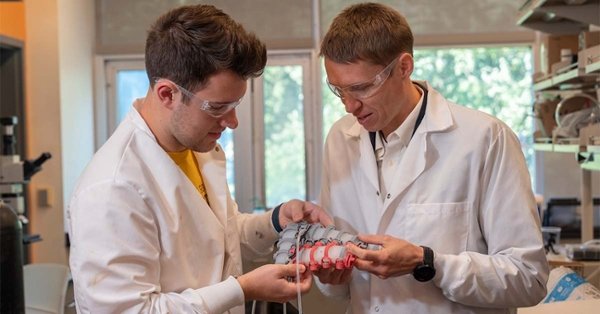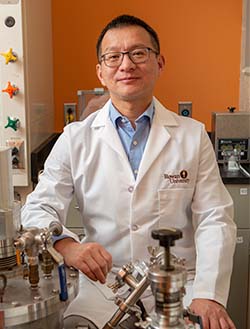Rowan University to develop new soft robotics educational modules
Rowan University to develop new soft robotics educational modules

In popular culture, robots are typically depicted as rigid metallic figures such as Transformers, WALL-E, and Star Wars’ droids. However, the next frontier of robotics won’t use hard, shiny materials, but soft, flexible ones instead—and Rowan University is already making inroads in the field of soft robotics education and fabrication.
With support from a new National Science Foundation grant, Rowan University is developing and integrating soft robotics modules into its mechanical engineering program at the Henry M. Rowan College of Engineering. The offerings will include an introductory course on the materials, mechanics, and machine learning concepts within soft robotics. Rowan will also offer a Certificate of Undergraduate Study in soft robotics. Once the courses are rolled out, researchers will study the effectiveness of the module to improve and optimize its educational offerings.
The project is led by Mitja Trkov, Ph.D., an assistant professor of mechanical engineering, and Wei Xue, Ph.D., an associate professor of mechanical engineering.
“Students can take traditional classes to learn about robots,” Xue said. “But if the future of manufacturing is human-centric, they have to learn about the materials and structures. Soft materials, smart materials and soft robotics will be important in the future job market.”
In soft robotics, more malleable materials are used to give a robot greater flexibility, allowing it to contract and expand. These robots are shaped like snakes or octopi, allowing them to reach into deep holes or corners where traditional robots wouldn’t be able to maneuver.
Softer materials also make these robots safer for humans to work alongside. The goal is to create machines that can harmoniously support humans—called collaborative robots, or cobots.
The soft robotics modules will differ from traditional robotics courses by focusing on a range of multidisciplinary skills, including new materials, fabrication methods, sensors and actuators, and functionalities.
Trkov and Xue will recruit students to create designs for their own soft robots on which to base the learning modules. Each module will focus on a different soft robot to highlight specific skills and concepts. These modules can then be used in already existing courses.
“We're trying to show different types of soft robots, and to develop and package these in modules,” said Trkov. “We’ll also provide some technical background, so that students can build the robot but also understand the basic principles behind each of the components or underlying mechanisms.”
Very few universities offer soft robotics education for undergraduate students. Through Rowan’s soft robotics modules, Trkov and Xue hope these concepts will be accessible to a greater swath of students. The grant will also support the development of a website to share these educational tools with the greater soft robotics community.
“We believe that soft robotics offers so many new opportunities in robotics,” Trkov said. “We're building this new workforce to think beyond traditional robotics.”